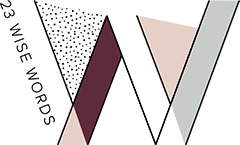What to put on your homepage as a service-based business.
The homepage. A navigation center to the rest of your site.
Your shopfront.
Let’s ponder on this analogy for a moment.
Imagine your homepage as a shop window display. You pick a theme and place only your best sellers in careful order, giving an eager passerby a glimpse of what’s inside.
The window shopper stops to look. The beautiful display entices and intrigues them to step inside and see what else they might want to buy.
But then, as you look around your store you start seeing other things to add to your display. The passerby has to know you sell this. And this. And what about this?
You add more and more and before long the window display is chokka, the window shopper can’t work out what you sell and briskly heads off in the other direction.
Do you catch my drift?
Your homepage should be a careful display that excites and intrigues. But does not bombard your virtual window shopper with Every. Single. Thing. that you offer.
So, with that top of mind, let’s journey through the optimal homepage flow for a service-based business.
The basic structure
Heading section.
Also known as the ‘above the fold’ section in web developer language. This is the section your visitor sees before they start scrolling. It’s prime real estate.
Avoid image carousel headline sections. You think you’re getting 4 important messages out there. The reader is taking in none of them. Make the headline aspirational. Some people like to make this a problem statement or question. I like to keep it positive and uplifting - the ultimate benefit.
A subheading helps to explain what you do. People need to get it within 3 seconds of hitting your site. So if you want to be aspirational in your main headline. Use your subhead to say EXACTLY what you do. This is also good for SEO.
2. Intro paragraph.
If your visitor, god forbid, doesn’t read any more of your website, this paragraph needs to wrap it up nicely for them before they bounce. It’s the TLDR.
Use this handy formula: Start with the reader’s biggest problem. What pain are they experiencing that’s led them to you?
Then we poke at that problem a little bit more. Aggravate it. Next we talk about how you uniquely solve the problem for them. And finally we give them the ultimate outcome.
Put a call to action button here.
3. The plan/ benefits.
Only now do we really start talking about your business. Before this we have been focusing on ‘what’s in it for me’ for the reader.
How does what you sell fit into their life? You might link to different product or service offerings in this section. You might talk about the benefits.
4. Overcome objections.
Why might your reader say ‘won’t work for me’? Remember your virtual visitor is looking for a reason to say no as they read your copy. Answer their objections, so they don’t have a reason to doubt you.
If your price point is higher, or your service more complex, answering objections might be long-form copy, maybe 5 or 6 paragraphs. This helps your reader feel like they have done due diligence. Done their homework. Use a ‘read more’ button and collapsable text.
For lower price points and simple offerings bullet points that answer the question This {{insert what you do}} is right for you, even if:” will do the job.
Add proof points to show how you help them overcome their objections. These might include stats or testimonials.
5. Main call to action
Sum up the page and make your end compelling argument here. Include a testimonial and then include two buttons. People need to choose between one action, or another, here’s why.
Bonus tips:
Remember the window display analogy? Pick one ‘ENTRY’ offer for your homepage. Your main service, or the one that your audience needs most. You can introduce the rest of your product or service suite in other areas of your site. Or once they start working with you.
Visitors will scan your homepage first. Make sure you have compelling crossheads to introduce each section. “The Benefits” is not a compelling crosshead. Naming a main benefit in the crosshead is the way to go. Be specific, don’t be vague.
It goes without saying (but I’ll say it anyway) every business is different, every service offering is different.
Your website homepage is not a one-size-fits-all situation, however it can be overwhelming to know what to include, follow this flow and you can’t go far wrong.
Did you enjoy that? Let me know by sliding into my DM’s here
If you’re up for it, Here are some ways we can work together (it’ll be so much fun!)
😍 Let me write high-converting, psychology-backed words for your website. Book a time to chat
😍 Let me write your launch copy, from ad to sales page to email sequence. Book a time to chat
😍 Come to my FREE Copy Clinic and I'll help you get unstuck with your words. Find out more
